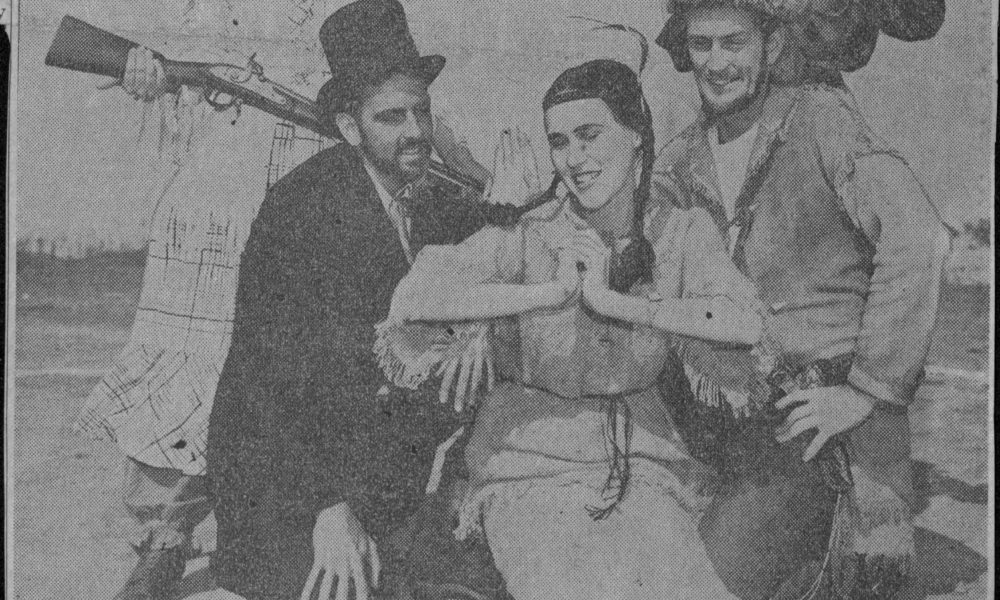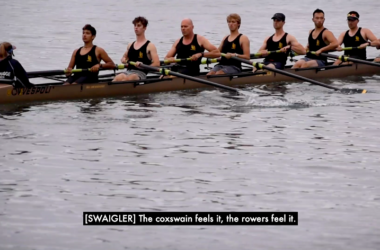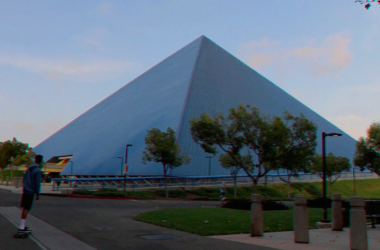By Cristal Gomez and Perry Continente
Long Beach State, like most institutions of its age, has a racist past. However, over time, the school evolved from an almost entirely white college to a more diverse campus.
In the late ‘60s, the Black Student Union protested the lack of representation of students of color in student government, occupying the Associated Students Inc. council chambers.
The Daily Forty-Niner responded by running a story with the headline “Blacks hold A.S. Senate hostage” and an editorial called “Wrongs don’t get rights,” condemning the protestors.
This story was printed on April 4, 1968, the day Martin Luther King Jr. died. News of King’s death was reported days later and buried on page 3. A month later the paper published an advertisement for medallions emblazoned with King’s image. They sold for $2.98.
The “49er Days” annual, Western-themed parties often featured dramatized violence against caricatures of Native Americans.
White students dressed in garish representations of indigenous people and participated in light-hearted skits depicting historical violence.
The first of these events took place in 1950 and included a white student in a headdress being held at rifle point while her captors discuss executing her. Another saw the lynching of an effigy.
Flipping through yearbooks in the ‘50s and ‘60s reveals rows of white faces with almost no diversity. In addition to the lack of diversity in the student body, many fraternities and sororities were segregated.
Alumnus Phil Riley attended CSULB in the mid-1950s and remembers when his frat excluded Huey Shepard, an accomplished student, because of his race.
“The fraternity I was in wouldn’t allow [Shepard] in because he was Black,” Riley said, “The members wanted Huey, but [the national organization] wouldn’t allow him in.”
According to Alumna Anna Nieto-Gomez, discrimination was a social requirement for many white students during that time.
Nieto-Gomez enrolled at CSULB in 1967 and felt isolated by the racially homogenous population. She said that the only time white students talked to her was to ask about her ethnicity.
“When I was at Long Beach there was no concept of Latina yet,” she said. “Those who stopped to talk to me ask what I was. They thought I was from another country.”
Nieto-Gomez was one of the first members of United Mexican American Students, an organization that championed Mexican students.
UMAS eventually evolved into La Raza, which remains an active organization at CSULB.
La Raza is one of many organizations such as the BSU that acted as catalysts for the changing demographics and culture of CSULB.
“In the summer of ‘68 we were going to organize ‘La Semana de la Raza,’ or ‘The Week of the People,’” Nieto-Gomez said. “We contacted the counselors and the teachers and told them we wanted to recruit students.”
Despite opposition, groups like La Raza and the BSU championed change. The groups took action and worked to dismantle the white supremacist power structures that used to dominate the campus.
In recent years, the population of Latinx students has surpassed the number of white students at over 40% of the university’s population.
Recently, the protection of Puvungna, the sacred land of the indigenous people, and the removal of longtime mascot Prospector Pete, due to the association of prospectors with the genocide of Native Americans in California, have become major concerns.
Associated Students Inc. Vice President Leen Almahdi, who co-authored the bill to remove Pete as mascot, commented on the progressive focus of the organization.
“I think the folks who served before me did a great job of bringing social justice,” Almahdi said. “Social justice was incorporated in literally everything.”
These actions have done much to dismantle the white supremacist power structures that used to dominate the campus.
However, racist faculty have been employed by CSULB as recently as this decade. Psychology professor Kevin MacDonald published a three-part anti-Semitic manifesto before his retirement from the university in 2014.
Additionally, critics have said the diversity of the student population is notably absent in the school’s faculty.
Alfredo Carlos, political science and Chicano studies professor, is one of the few Latinx professors in the predominantly white political science department. He has seen firsthand how the campus has changed since his time as a graduate student from 2004 to 2008.
Carlos said he has experienced microaggressions, subtle, and often unintentional, racist actions that reflect people’s preconceptions.
“When I was on a panel, one of the older professors had asked when we were going to bring the food out. It’s nothing malicious on their part,” Carlos said. “I take things like that with a grain of salt, it wasn’t the first time something like this happened.”
Carlos mentioned the disparity between the school’s population and its current faculty.
“If you look at the power structure of the university, it’s not indicative…of the student population,” he said.
Studies have shown that students of color are more successful when they are being taught by someone who looks like them. Carlos said that a diverse faculty will improve things for students of color who currently see few educators who share their experiences.
CSULB still has a noticeable gap in its student demographics in relation to Long Beach as a whole. Just over 4% of CSULB students are Black, compared to almost 13% of Long Beach residents.
Almahdi is concerned that the demographics of the college do not accurately reflect the population of Long Beach.
“If you look at our rates of access and retention to Black students, the rates aren’t particularly high for a university,” she said. “There are not a lot of people for students of color to relate to.”
In addition to a lack of representation of Black students, recent construction that has involved Puvugna has provoked a backlash from indigenous groups.
Almahdi said that as far as CSULB has come, social reform is a perpetual process.
“I think it’s a work in progress,” she said. “We can never get to the point where we are 100% good.”




